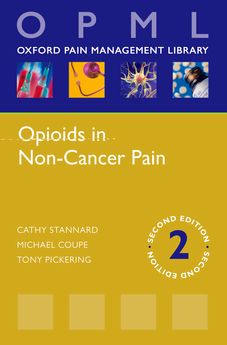Opioids have been used as analgesics for many years, and their use in the management of acute pain related to trauma and surgery is well established. However, patients with persisting pain need a pain management plan that brings relief of symptoms without adverse effects in both the short and longer terms.
The prescribing of opioids for chronic non-cancer pain has increased substantially since the first edition of this pocketbook was published, prompting considerable debate regarding the appropriateness of prescribing for this indication and the potential harms to individuals and to society that may result from this trend. This second edition of Opioids in Non-Cancer Pain brings clinicians up to date on the current use of opioid drugs in patients with non-cancer pain, and highlights the potential benefits of therapy as well as the problems that can occur. The edition includes new chapters on the history of opioids to help contextualize the following discussions, and a new chapter
covering the emerging field of pharmacogenomics which provides explanations for differing responsiveness to opioids and propensity to adverse effects. An international perspective on opioid prescribing trends is also a valuable new addition.
Features
- An easily accessible pocketbook covering the current guidance on prescribing opioids for long-term pain management
- Helps clarify for prescribing professionals the many misconceptions about the use of opioids
- Explores the legal and ethical issues relating to controlled drug prescribing to support responsible and safe prescribing for patients
1Opioids: a brief history
2Opioid pharmacology
3Opioid actions:insights from imaging
4Pharmacogenomics of opioids
5Opioid prescribing trends: an international perspective
6Current good practice in pain medicine
7Benefits and adverse effects of opioids
8Opioid induced hyperalgesia
9Contraindications, cautions, and drug interactions
10Clinical use: back pain
11Clinical use: pain associated with osteoarthritis
12Clinical use: neuropathic pain
13Practical aspects of prescribing
14Opioids and addiction
Medical specialist trainees in pain medicine, anaesthesia and other disciplines who manage patients with pain; clinicians in primary care; specialist nurses prescribing drugs for pain control.
